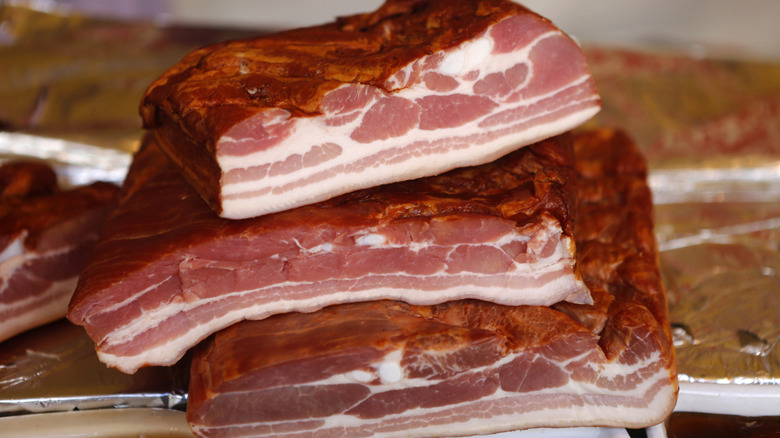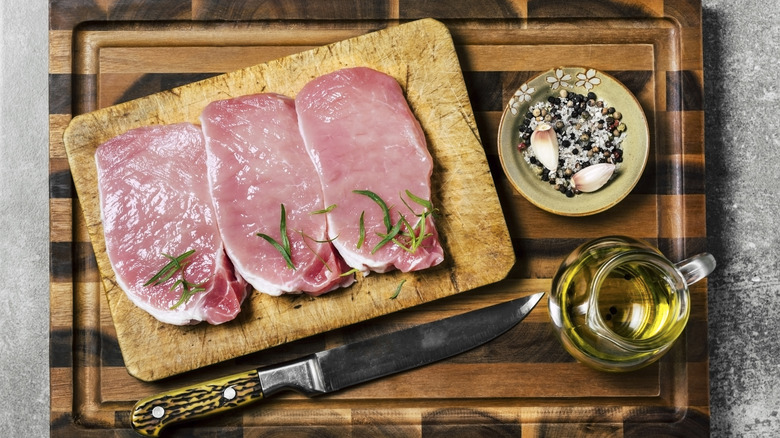Bacon Is The Secret To The Best Pork Chops Of Your Life
For all their ubiquity on kitchen tables all over the country, pork chops are easy to screw up. Like a lot of proteins, the pork chop's biggest threat is dryness. As its famous slogan, "the other white meat" implies, a lot of pork is lean. (Technically, the USDA still classifies pork as red meat.) Less fat means less moisture, so pork chops are already facing a juiciness deficit before they even hit the heat (which should also typically be a brief meeting for the same reasons). Introducing outside fat can bring some rich potential back to the pork chop, and the best place to find it is from elsewhere on the pig, with bacon.
While pork chops are cut from the swine's leaner loin, bacon typically comes from the fattier belly. The dense chop won't do much for the yielding, marbled strip, but a few rashers wrapped around a pork chop can amp it up with a recipe-changing infusion of that decadent, juicy fat.
How a bacon-wrap keeps pork chops moist
Wrapping your raw pork chop in uncooked bacon is like a hands-free basting hack. Consider the Thanksgiving turkey, or even the everyday butter-basted steak. The big bird must be basted many times, over the course of several hours, to maintain the minimum amount of juiciness to keep hackneyed dry turkey jokes at bay. The steak, too, even a beautifully marbled one, requires a methodical bath of bubbling melted butter, and just a few minutes to work with, to reach that target melt-in-your-mouth quality. Wrapping your pork chop in bacon has a similar effect, with way less attention.
It's also almost as easy as it sounds. Just be careful not to over-layer the pork, leading to charred strips outside and the dreaded floppy bits inside. First, season your pork chops, going easy on the salt thanks to the bacon's deeply saline flavor. Then, unless the chop retains a perimeter of fat, line its edge with two bacon strips. Hold it together with toothpicks if necessary, and continue to wrap the chop's circumference with two-to-three more strips. Remove any toothpicks, and bake for about 20 minutes before crisping the bacon for another few minutes on each side under the broiler. Between the two heat sources, you'll need to reach an internal safe zone of 145 degrees Fahrenheit. It's better to be a little under as you complete the baking and finish with that final step. A little center pinkness is welcome at that minimum temperature.

